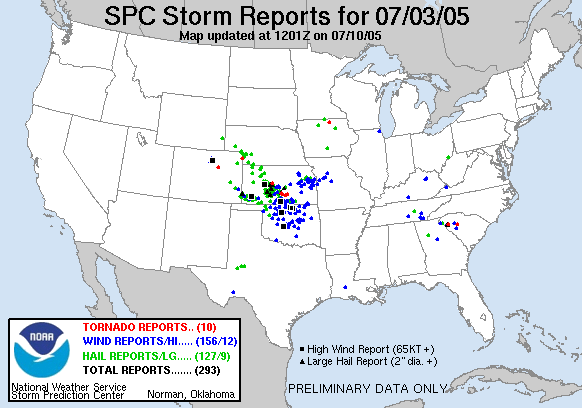mikegeukes
EF5
Is the term Derecho overused, often people use the term derecho much too often, the original definition was more detailed in specifying what constitutes a derecho, now it seem, the term derecho is used loosely with any linear storms, that have a lot of wind reports.
From: METED UCAR also Johns and Hirt
I notice the defintion for Derechos have change somewhat in literature:
Source: AMS Glossary
From: METED UCAR also Johns and Hirt
Long-lived convective systems that produce extensive and nearly continuous straight-line wind damage are called derechos. Deh-RAY-cho is a Spanish word, which can be interpreted as meaning “straight ahead.\" To be classified as a derecho a single convective system must produce wind damage or gusts greater than 26 m/s (50 kt) within a concentrated path area at least 400 km (215 n mi) long. The severe wind reports must exhibit a chronological progression and there must be at least three reports of F1 damage and/or convective wind gusts of 33 m/s (65 kt) or greater separated by at least 64 km (35 n mi). Additionally, no more than three hours can elapse between successive wind damage or gust events
I notice the defintion for Derechos have change somewhat in literature:
Source: AMS Glossary
Source: NWS Detroit Glossaryderecho—A widespread convectively induced straight-line windstorm.
Specifically, the term is defined as any family of downburst clusters produced by an extratropical mesoscale convective system. Derechos may or may not be accompanied by tornadoes. Such events were first recognized in the Corn Belt region of the United States, but have since been observed in many other areas of the midlatitudes.
Source: NWS Norman Spotters GlossaryDerecho: (Pronounced day-RAY-cho) A widespread and usually fast-moving windstorm associated with convection. Derechos include any family of downburst clusters produced by an extratropical mesoscale convective weather system (MCS), and can produce damaging straight-line winds over areas hundreds of miles long and more than 100 miles across. There are 2 types of derecho-producing convective systems. They are serial and progressive.
Source: Storm Prediction CenterDerecho - (Pronounced deh-REY-cho), a widespread and usually fast-moving windstorm associated with convection. Derechos include any family of downburst clusters produced by an extratropical MCS, and can produce damaging straight-line winds over areas hundreds of miles long and more than 100 miles across.
MikeWhat is a derecho?
A derecho (pronounced similar to \"deh-RAY-cho\" in English or pronounced phonetically as \"\") is a widespread and long lived windstorm that is associated with a band of rapidly moving showers or thunderstorms.


